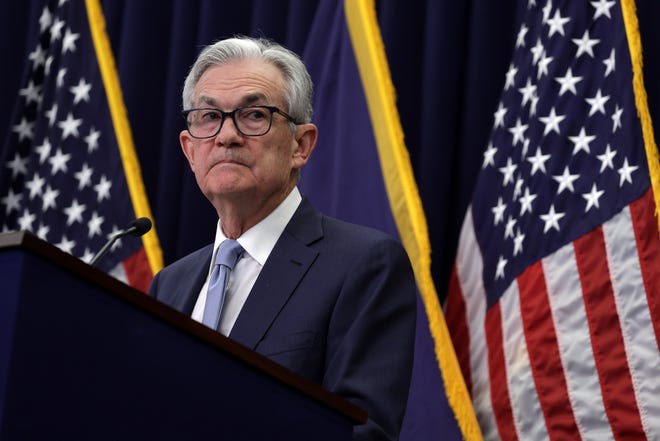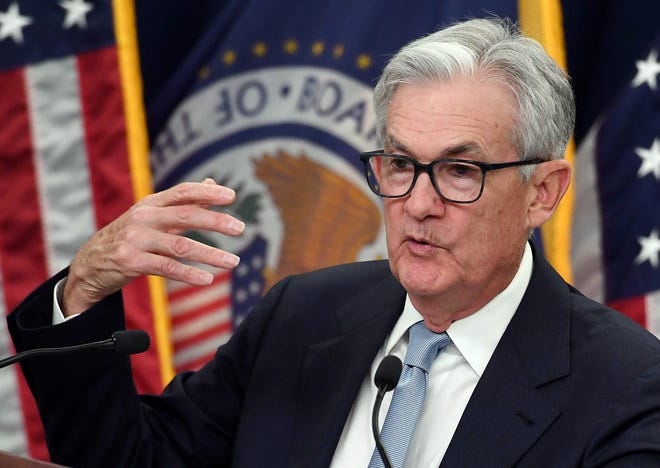Here’s the good news.
After its most aggressive rate hike in 40 years, the Federal Reserve on Wednesday will approve a final quarterly point increase and signal a long-awaited pause, economists say.
The prospect of an end to rate hikes should come as welcome relief to consumers and businesses struggling with high borrowing costs. This will ease the worries of investors who have been hurt by the market’s fallout from the 13-month rate hike campaign. Any sign of a halt would come sooner than expected, given that the recent failures of Silicon Valley Bank and Signature Bank have acted as a kind of rate hike by curbing lending, economic growth and, most importantly, inflation..
Now, the not so good news.
The central bank has no plans to unfurl the “Mission Accomplished” banner. If inflation and the labor market do not cool as expected, it is expected to say it is ready to raise interest rates further. The central bank will insist it does not plan to cut interest rates this year, as markets predict, even if a widely predicted recession does occur. Fed officials do not expect rate cuts until 2024.

“They’re not afraid of a shallow recession,” says Barclays economist Jonathan Miller. “They want to avoid causing a deep recession.”
Will the Fed raise rates again this year?
In other words, while the Fed is on pause, Miller says, it’s ready to raise or lower rates this year, but more likely to raise them.
Economists expect the central bank to remove guidance in a post-March meeting report saying “some additional (rate increases) may be appropriate” to bring inflation down to the central bank’s 2% target. Instead, Goldman Sachs expects rates to remain high enough to meet that target, but the Fed will closely monitor economic data to determine its next interest rate moves.
Such a strategy would not be surprising. In March, the central bank raised its key rate by another quarter point to 5.25%, expected to end its inflation-fighting effort, raising the benchmark rate from near zero in early 2022.
Recent economic data presents a mixed picture of inflation. The central bank’s preferred rate of inflation fell to 4.2% last month from a 40-year high of 7% in June, a government report revealed last week. But the baseline “core” measure of removal of volatile food and energy products was higher than estimated at 4.6%.
Also, a barometer of wage growth showed U.S. workers’ wages and benefits rose 1.2% in the first quarter, topping economists’ estimates for the fourth-quarter pace. Firms often pass on higher labor costs to consumers through higher prices.
What causes central bank to raise interest rates again?
“We think a June hike could be back on schedule if inflation stops picking up with continued strong employment gains in May,” Barclays wrote in a research note.
The central bank expects core annual inflation to ease to 3.6% by the end of the year, according to its March forecast. That would require monthly price increases of less than 0.3% on average, Barclays says. If data in the next few weeks show inflation above that pace, “that could be the basis for another hike,” the research firm said.
Similarly, monthly job growth slowed to 236,000 in March from 472,000 in January. Barclays says that if May wages hit 200,000, that would also lead to a rate hike by the central bank in the coming months.
However, Morgan Stanley notes that such developments “must be weighed against information about bank lending and its economic consequences.” Simply put, if a banking crisis constrains borrowing and the economy more than expected, the central bank must balance conflicting forces.
“It’s a tricky proposition,” Miller says.

Why does central bank cut interest rates?
Barclays says rate cuts this year are “highly unlikely unless a broad-based financial crisis or a more significant external shock hits the economy”.
Barclays expects a recession starting in the second half of the year to cause about 800,000 job losses and raise the unemployment rate to 4.9% from 3.5% in early 2024.
That’s a milder-than-average decline, Miller says, and it will take a much sharper decline to prompt the Fed to cut rates this year.
“We think a moderate recession will emerge (later this year), but because inflation will be high and sticky, the Fed won’t respond by cutting rates,” said Cathy Postjanczyk, chief economist at Nationwide Mutual.
